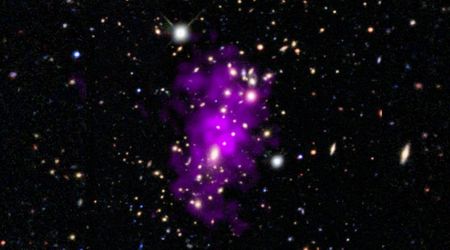Wildfire season across North America is obstructing stargazers' view

The evening of May 29, 2025, brought disheartening news for astrophotographer Bob King. After driving to a secluded location to observe and photograph the northern lights, he found his efforts thwarted by a thick blanket of Canadian wildfire smoke. Initial time exposures barely managed to capture faint traces of aurora against a sky largely devoid of stars. This smoky veil has persisted with varying intensity every night since, showing no immediate signs of dissipating, according to King. To gauge the sky's clarity, he employed a method of counting visible stars from a dark, rural spot. On May 30, he painstakingly managed to see only 17 stars. Two nights later, his count improved slightly to 24, per Sky & Telescope.

Where there had been occasional reprieves, where the smoke thinned, allowing more stars to become visible and the daytime sky to reclaim its natural blue hue, King expressed concern that this "fire-induced miasma" would linger for much of the summer. He noted that the northern US is particularly vulnerable to wildfire smoke due to its proximity to Canada, but prevailing winds can carry the irritating haze across vast distances. Brownish smoke had been observed dimming the Sun along the East Coast, Central Plains, Midwest, and Appalachia. Furthermore, forest fires in California contributed to an extended burning season, making widespread smoky skies a recurring issue through early fall.

While there are frequent reports about the health ramifications of wildfire smoke and images of hazy cityscapes and a glaring red midday Sun, amateur astronomers like King are keenly aware of another significant consequence: "the wholesale disappearance of the stars." He emphasized that while light pollution already presents a challenge for observing, the addition of smoke renders celestial viewing even more difficult. Consequently, King meticulously tracked weather patterns and analyzed satellite imagery in his quest for clear skies.

Until the sky's usual transparency returns, King has adjusted his visual observation list, removing all deep-sky objects except for higher-altitude globular and open clusters. Fortunately, some current targets remain observable even under poor sky conditions. These include the Sun (for both white-light and hydrogen-alpha viewing), the Moon, Venus, and Saturn in the morning sky, and brighter variable and double stars. Astrophotography with smart telescopes, though compromised, is still feasible by extending exposure times.
King lamented the loss of the "evanescent colors of the twilight transition that add so much to the charm of a sunrise or sunset," which wildfire smoke absorbed, effectively neutralizing the scene. He acknowledged that while "seeing the Sun or Moon turn cherry-red long before either sets is an incredible sight," it didn't compensate for the diminished twilight experience. King pointed to climate change as a driving factor behind the increased frequency and intensity of fires across Canada and the western US in recent years.
Warmer summers combined with reduced or erratic rainfall have parched forests and soil, making them more susceptible to both lightning strikes and human-caused fires. Reflecting on his experiences in Minnesota, King recalled that smoky nights were an "occasional nuisance from the 1980s through the early 2000s." However, since approximately 2015, summertime wildfire smoke has become a consistent presence, lasting "for days and sometimes weeks on end." He offers a shared sentiment to those experiencing similar conditions: "If you're suffering from the same, hang in there. You've got company."









